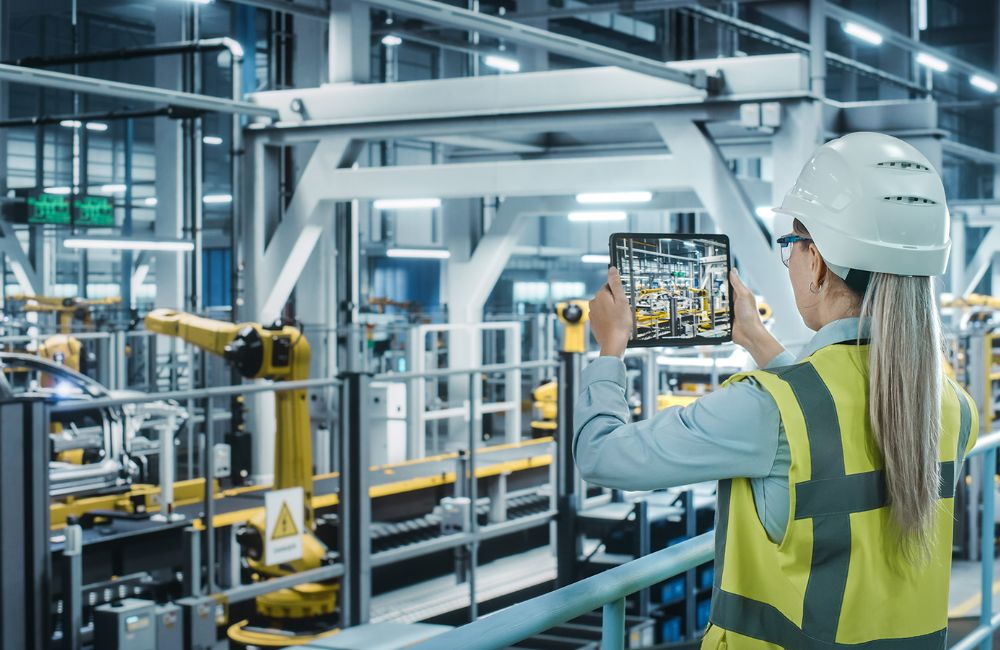Machine Safety Basics for the Industrial Facility
Across the United States, machine operators suffer as many as 18,000 amputations, lacerations, crush injuries, and abrasions every single year while at work. In the European Union in 2021, workers suffered 2.88 million non-fatal accidents and 3,374 workplace fatalities while on the job. Incidents like these show that it is of paramount importance that machine manufacturers put forth their very best effort to reduce or eliminate risks. Additionally, machine end users must maintain this safety throughout the entire lifecycle of the product. This often means understanding legislation, which includes a range of standards and best practices, as well as the correct use procedures for a machine no matter where in the world an operator is located. Though it may seem daunting at first, knowledge of machine safety basics is necessary for anyone designing machines or working with the equipment.

What is Machine Safety?
Machine safety is an all-encompassing term that refers to the protection and well-being of the individuals who operate or are otherwise exposed to machinery. It is achieved by assessing, controlling, and removing risks. Machine safety not only plays a role during operation, but also in the design and maintenance of the equipment itself. Overall, this includes a wide range of elements, including machine guarding, industrial machine safety standards, and beyond.
Machine Safety: Directives vs. Standards
Before adding new machinery to or updating existing work equipment in a facility, it’s first necessary to understand the various safety directives and standards in Europe, North America, and beyond.
In the EU specifically, every machine must comply with the essential health and safety requirements of the Machinery Directive 2006/42/EC before it is placed on the European market. The manufacturer will then CE mark the machine. The directive only covers essential requirements, so there are no details regarding further requirements. The manufacturer will need to use standards to fill in that gap. This combination allows manufacturing companies to not only keep employees safe from harm, but to also ensure they comply with legal requirements.
Meanwhile in the United States, the Occupational Safety and Health Administration (OSHA) sets a variety of machine safety standards through Standard Number 1910.212. This covers a wide range of different regulations, such as how machines are to be guarded, where employees can work while the machine is in use, how to remove and add materials to the machine during operation, and more.
Safety Control Systems and Industrial Machinery
To maximize safety and minimize the potential for harm, it is necessary to create risk reduction measures for use on different levels. This can start with simple things like removing sharp edges, but becomes more complex by introducing safety related control systems. For those systems it is important to define the different safety functions and calculate the reliability of them. This is done through the use of standards, most often IEC 62061 (SIL) or ISO 13849-1 (PL). Each of these standards provides the guidance that businesses require to ensure their teams are not injured while operating with or near machines. Additionally, a defined validation plan from the equipment manufacturer will confirm the design meets all safety specifications.
Machine Manufacturing Safety: Three Key Factors
As machine manufacturers and users develop full plans for machine safety systems and machine safeguarding, there are three helpful key factors to keep in mind:
- Throughout the design phase, safety should stay at the forefront of everyone’s minds. This includes both the machines themselves and the plant design especially.
- Reduce risks around plant machinery by designing with safety control systems in mind. Standards and directives are there for a reason, so be sure to utilize their guidance.
- Once everything is in place, utilize items like posters, manuals, and readily available PPE around the plant floor to ensure that employees and other individuals understand risks.
The Machine Safety Difference
Machine safety is just one essential element of the overall safety plan. Manufacturers across all industries must have guidelines in place to keep the people in and around their facilities safe, whether they are operating a machine, packing a box, or otherwise. PA Solutions can make this plan a reality. Our team has broad experience across the full spectrum of machinery. This includes:
- The CE-trajectory for new machines.
- Evaluation according work equipment legislation for existing machines.
- And the capability to integrate machine and process safety as one cohesive function.
We tailor this to your unique business, instead of a generic plan that won’t offer the effectiveness you need. Want to know more? Take a look at our safety site or Contact PA Solutions today to get started on the right machine safety guidelines for your operation.





